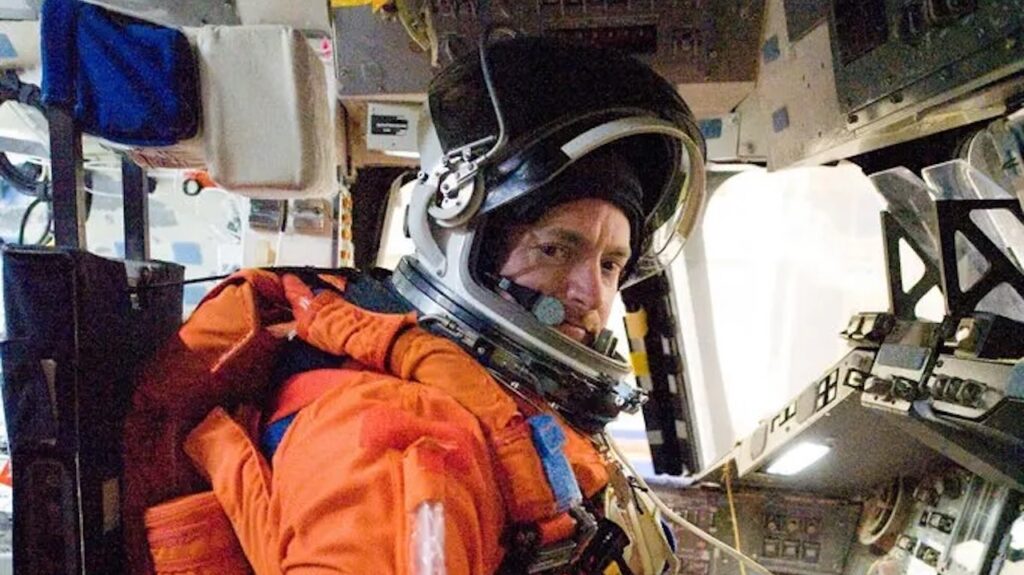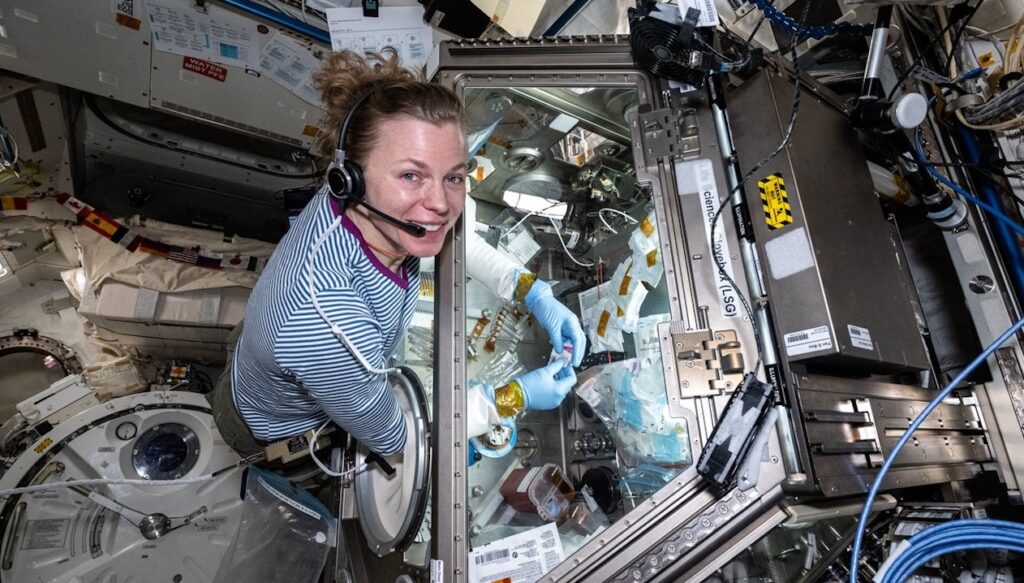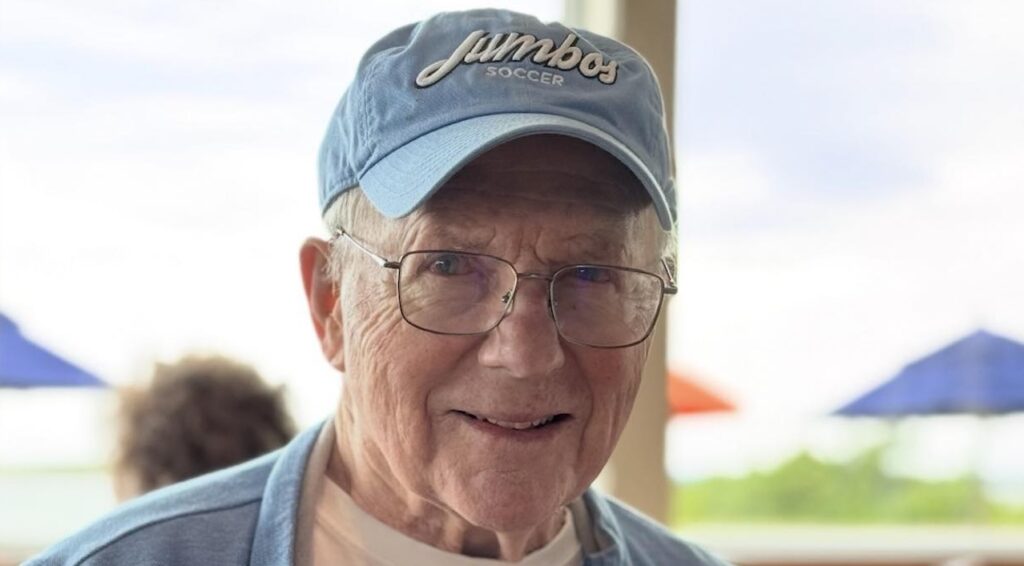FAA Regulations and NASA Astronaut Flights (No Weapons Allowed)
 FAA Interpretation Concerning Involvement of NASA Astronauts During a Licensed Launch or Reentry
FAA Interpretation Concerning Involvement of NASA Astronauts During a Licensed Launch or Reentry
“This interpretation responds to a request from the National Aeronautics and Space Administration (NASA) regarding whether the space transportation regulations of the Federal Aviation Administration (FAA) would restrict NASA astronauts from performing operational functions during a commercial space launch or reentry under license from the FAA.”
2 The pertinent FAA regulations simply require that space flight participants: (1) be informed of risk; (2) execute a waiver of claims against the U.S. Government; (3) receive training on how to respond to emergency situations; and (4) not carry any weapons onboard. See 14 CFR Sec. Sec. 460.45-460.53.









Surprised that there is so much going on about this. It is trivial at it’s best. It is just confirming that you must have training to pilot into/out of space in order to do it legally in the US. Wish I could have gotten paid to do this report. Somebody must really have needed the job security. Good grief.
The ruling is needed to determine whether NASA follows the rental car or taxi car analogy for procuring rides for its astronauts. This ruling allows NASA to follow the rental car method.
Byeman:
That’s a very good way of putting it! It reads more like a combination of the taxi/rental models to me.
tinker
well, the FAA could have decided to put far more severe restrictions in place. based on a cursory read of the regulations, the FAA has basically said that NASA astronauts are free to participate in all stages of a commercial space flight, particularly if there’s an emergency situation.
“The pertinent FAA regulations simply require that space flight participants: (1) be informed of risk; (2) execute a waiver of claims against the U.S. Government; (3) receive training on how to respond to emergency situations; and (4) not carry any weapons onboard.” and goes on to describe that a space flight participant who wishes to pilot a space vehicle must be employed or contracted by the launch provider and be given training to do so.
that leaves a lot of leeway for commercial manned space launch providers, which is good. it means there’s lots of flexibility for commercial launch providers!
Solders are deployed overseas on civilian aircraft. Are there any rules covering the aircraft having Air Force pilots that may give a precedent?
in the event of an emergency, i’d imagine any civilian airliner would be more than happy to let an air force pilot land the plane
I agree with you. I believe these regulations are meant to apply to nominal conditions. In an emergency, all bets are off.
Monica:
It’s a little more complicated than that.
During the Shuttle Program, there was two streams of astronauts, pilots and mission specialists. Mission specialists did not have to learn to fly the Shuttle, with the exception of the ‘3rd seat’ crew member on the flight deck that would oversee and choreograph if necessary for the flight crew.
So, the FAA had a quandary. Do they treat NASAnauts as mission specialists and company pilots as flight crew exclusively or allow overlap as in the Shuttle program.
Obviously, the FAA allowed decades of precedent to guide them and overlap will be allowed. This doesn’t mean that all NASAnauts will have flight training, but at least one will be able to fly the spaceship in an emergency.
Remember, NASA wants the first commercial spacecraft to taxi it astronauts to the ISS. If they are taxied up and down by company pilots, that spacecraft won’t stay at the ISS for more than a few days, so the NASAnauts will need at least re-entry pilot experience in whatever lifeboat they have stationed at the ISS for emergencies.
If SpaceX gets the contract, this would be easy to accomplish. SpaceX can carry three NASAnauts to the ISS (plus two company pilots) and then carry another crew of three down. Since the Dragon can carry seven crew, a Dragon lifeboat could carry two crews of three home in an emergency easily. Based on SpaceX’s Dragonlab Program, a Dragon lifeboat would have an on-orbit life span of over two years. Once it reaches that milestone, another could be sent up and then the old Dragon lifeboat could be sent back to Earth with cargo. Heck, send cargo up in the replacement lifeboat. Nothing’s wasted that way. Also, Crew Dragon will run on batteries alone, so no solar panels would be needlessly thrown away each taxi flight.
The FAA had to think through this scenario and others too. You don’t see a lot of the background work that is done to make a policy document, but it’s there if you read between the lines.
tinker
I have seen & interpreted the FAA regs for years; I know the drill. Horse-feathers, I say, this is just crazy redundancy at it again. It is elementary, if you are in the business of flight, you know what I am saying.
I am sure that Jerry from Janitorial does not have any qualifications that make it a good idea for him to go up to the ISS. Still, don’t you think that SpaceX & other 3rd parties have strategies based upon the FAA regs already in place? These courageous astronauts/space-persons already know that it is a hostile environment, even my 4yr old grand daughter knows this. Safety training is also a given,(do not open window during flight. Yes, *sarcasm*)
Then to address taking weapons into space? Really? It is unbelievable that this has to be written by the FAA. I know that it is not a ferry flight from JFK to MZJ, but c’mon.
I suppose I am just frustrated by administration & extra fingers in a pie. We can only prepare for what is logical & remember that in space there is no box.
Monica:
I think that the FAA let both NASA and commercial crew providers off easy. They could have make things much tougher with regulations the size of a phone book (that dates me!).
As for weapons, I’m still scratching my head on why that rule made it to a top level document. It’s seriously out of place!
As far as I know, there are two shotguns at the ISS as I type… under the commanders seats of the Soyuz (although the firing pins are probably somewhere else ;)).
We’ll see where this leads but I still think the blended Space Shuttle crew arrangements would be a good model to draw on.
tinker
i think the “no weapons” clause means the TSA will have to search spaceflight participants before boarding :p
I remember reading them then using the SOP & FAA regs as a chock for the air craft & stacking them for the kid’s high chair. 😀
Still,I ponder the shot gun thing. I can not get Will Patton out of my head. https://www.youtube.com/wat…
What is an astronaut?? What is a pilot??? Who is piloting cargo dragon now!!! A ground controller. Is he or she an astronaut?? Will NASA rent dragons and do all the ground control too?? Will dragons be piloted from the ground and the on board pilot really be just a safety backup??? Won’t the controls of Dragon rider mostly be just CRT copies of displays that are on the ground with the real pilots??? Are not all Near earth LEO astronauts from now on really just passengers anyway???
Dtars:
Dragon drives itself I believe. Like a horse, ground control just tells it where to go and what to do, than it decides!
tinker
George, I have a suspicion that you’ve hit on a key issue. This whole exercise might just be a necessary precedent-setting step on the way to laying down the rules for escape spacecraft (from the ISS or anywhere else) that detach and land themselves in an emergency. That’s the obvious logical next step.
If no “pilot” is available or all “pilots” have been injured or otherwise disabled from flying, then you’d really want to have a self-reentering, self-landing life boat to bring everybody back to Earth, or to some other safe haven in LEO. The rules for piloted escape spacecraft provide the starting point for specifying the requirements and rules for automated escape spacecraft. That’s my theory.
Once we’ve got the automated escape spacecraft operating smoothly, I would expect to see them as the primary emergency escape mode instead of the backup. And then, down the road, once we move out past LEO and cis-lunar space, I would expect the same automated escape spacecraft and rules to be used throughout the solar system (I can envision Budget, Penske, Enterprise, Ryder, Discount, U-Haul and all the others battling it out in the asteroid belt and beyond).
Well it did say “space flight participants”.
Once upon a time the Vozhkod-2 capsule came down where it wasn’t supposed to. it landed in the Ural Mountains instead of the steppes of Kazahkstan, and the cosmonauts were set upon by wolves and possibly bears whenthey were forced to spend a night in the wild.
Ever since, Soviet-Russian manned capsules have carried a sawed off shotgun under the commander’s seat. A Russian solution to a Russian problem… and the weenie American regulators can’t do a damn thing about that.
Actually it is a standard survival weapon, the TOZ-82, essentially a large manually-loaded pistol with two barrels chambered for 32-gauge shotgun shells and one for a 5.45mm rifled cartridge. It has a folding stock containing a machete blade.
I think your comment about American regulators is politicized and irrelevant, revealing the sort of bitter ideological hostility that is undermining so much of American policy. US pilots are permitted to carry properly registered survival weapons in aircraft, and in some parts of the country, i.e. Alaska, this is certainly a reasonable precaution. However in the entire history of spaceflight this type of incident occurred only once, almost half a century ago, and with improvements in navigation and guidance, not to mention much more capable rescue and recovery vehicles, it is of little practical concern today.
My tongue-in-cheek (but only partially) response to Dewdle and others with his attitude is that the Ural Mountains needn’t be a dangerous place to land, by comparison to other possibilities, if pilots use their heads. Now, it seems to me that if a spacecraft accidentally landed in the back of a Tennessee pick-up truck, then the pilots could be in real danger!
All the Guys I work with are from Tennessee and they are all Armed with hunting rifles, some bought over this Thanksgiving break. I’m sure they would protect whoever landed in their pickup truck.
As long as your pilots are polite and treat others with respect, l’m sure no guns would be needed. Maybe take them home and feed them deer meat too. 🙂
If I could go all lawyer-like for a moment, the argument could be made that even the Russian capsules do not violate the regulation (understanding that Russian capsules are not subject to these regulations).
The weapon aboard their vehicles are part of the vehicle, and not part of any particular persons equipment kit. Note the regulation applies to each “space flight participant”, which I interpret to mean humans, and thus has no bearing on how the vehicle itself is equipped. [lawyer mode off] 🙂
I agree. The regulation SFAIK just extends current aviation law to spacecraft to prevent the carriage of unauthorized weapons by passengers. The last thing you need on a spacecraft is somebody shooting holes in the hull.
To me the consultation with FAA,although the outcome is hardly a surprise, is a good sign in two respects. First, the situation is not simple since most spaceflight participants are precluded from vehicle operation in contingencies. The FAA provided a practical and well-reasoned answer in an environment in which regulatory snafus are common; just ask SpaceX. This supports the FAA reputation as a more appropriate regulator of commercial spaceflight than DOD, the current default for the launch segment. Second, it confirms that NASA is planning to fly personnel in the passenger role on commercial vehicles and is looking to the FAA to provide regulatory guidance. NASA is _not_ a regulatory agency for commercial industry.
In practical terms, Florida at least has little hope for competing in real commercial launch services unless the regulatory authority for such services is transitioned from DOD to FAA, not just for passenger activities but for design certification, range safety and scheduling. This is a sign that NASA, for its part, is moving in this direction.
I think you’ve given a very well reasoned response.
I suspect that future space science investigators are going to be watching this very carefully, since it would potentially avail them of the opportunity to actually “boldly go” themselves into space and perform their own experiments and investigations — on the spot and in real time — instead of trying to design and operate things by remote control using NASAnauts and automation.
And once the legal, regulatory and insurance aspects of this are ironed out and become precedent it’ll presumably be a big leg up for the space tourism people.
I think this is an important step indeed. Hopefully, they’ll follow through on it, keeping in mind the idea of creating a set-up that can be directly duplicated elsewhere in the US, and then anywhere on the planet. If they don’t iron it out in Florida, some other country will grab the procedural high ground. I really hope this consultation and everything that logically flows from it will remain cooperative and internationally applicable, and not turn into a competitive solely-money-driven situation.
“Crew” is defined by Congress in the Commercial Space Launch Act, 51USC 50902:
(2) “crew” means any employee of a licensee or transferee, or of a contractor or subcontractor of a licensee or transferee, who performs activities in the course of that employment directly relating to the launch, reentry, or other operation of or in a launch vehicle or reentry vehicle that carries human beings.
Everyone else is a space flight participant. [lawyer mode stuck “on”]
Oh, so the rest of the passengers – er “participants” – can bring their guns? Cool 😉
But everyone is a space flight participant, right? Crew is just a subset. If that’s not the case, then they are going to have to be way more careful with the wording.
there go the phasers
Good thing the USS Enterprise wasn’t meant to land on Earth. Now for people beaming down with phasers, I’m not sure how that would fall under the regulations.
DOT, get it Department of Transportation…